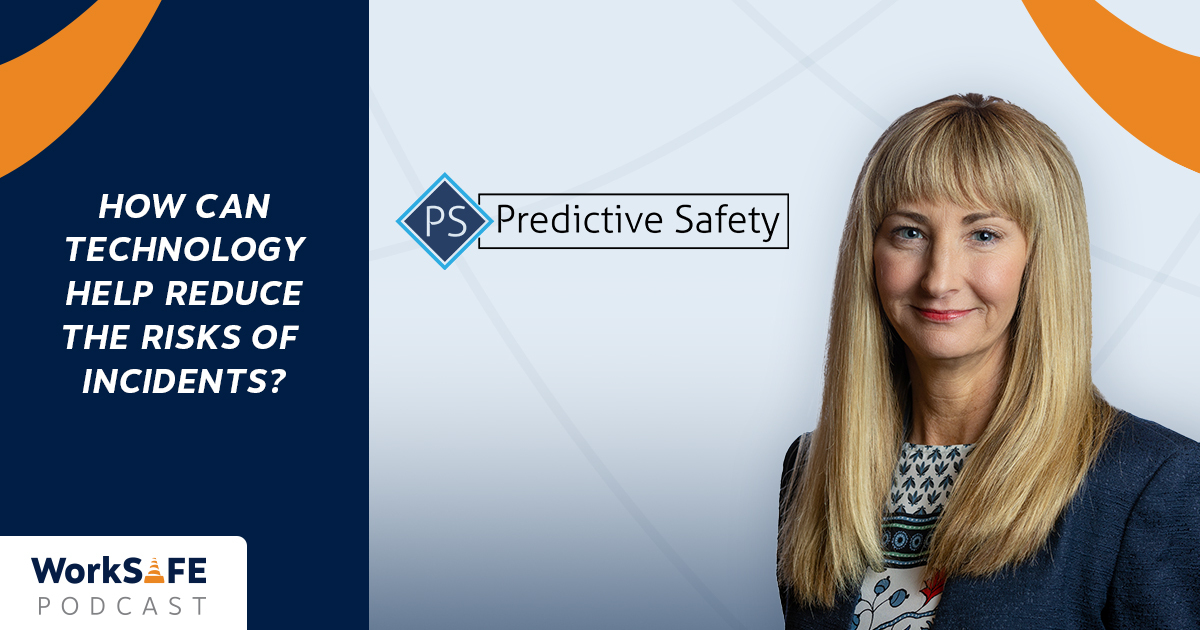For Media Inquiries
Contact Revee White, Director of Marketing and Communications at rwhite1@mem-ins.com or 573.499.4190.
Being tired on the job is nothing new for the average employee. Struggling through their shift, their mind may be begin to wander, body moving on autopilot. A fatigued employee can create liability for a business. But how do employers know when a worker has reached the tipping point – when being mentally and physically drained becomes dangerous? To bridge the gap, a new form of technology is stepping in: Predictive Safety.
On this episode of the WorkSAFE Podcast, we sit down with Jeff Akers and Jeffery Sease, CEO and COO at Predictive Safety, a global provider of impairment detection technology. The company develops technology that focuses on testing employee readiness throughout the workday.
First, we’ll explain what causes employee fatigue. Then, we’ll discuss why fatigue and impairment are workplace hazards. Finally, we’ll share how Predictive Safety technology can make a difference in the workplace.
Listen to this episode of the WorkSAFE Podcast or read the show notes below.
The hidden hazard employees bring to work
Fatigue is a hidden hazard many employees bring to work with them every day. According to Akers, in a measurement taken from more than 100 million work hours, 92% of workplace incidents weren’t caused by drugs or alcohol. Their source? Human error.
Although it isn’t intentional, sometimes fatigue is worked into the blueprint of a business. A poorly designed schedule, such as one where overtime is constant and unexpected, can lead to routine tiredness. In addition, employees don’t always work the way they should. They take on extra shifts, work longer hours, or cover for co-workers.
“One of the things that’s really tough with fatigue is the person that’s most fatigued is usually the least likely to recognize it,” Sease shared. These extra work hours add up, without employees – or their employers – realizing it. “All of those things can really contribute to fatigue in a substantial way,” he added.
Fatigue is a kind of impairment
We don’t always know when we’re tired. Working in a constant state of exhaustion can give the false impression that it’s the norm. But in reality, fatigue is a kind of impairment. And that impairment can lead to serious mistakes.
A few examples of this stand out in Sease’s mind. In one incident, a worker overturned his forklift after making a steering error. An investigation revealed that his wife had handed him divorce papers just before his early morning shift. “Do you think he was in the right state of mind when he got into that forklift?,” he asked. “Do you think he was in the right state of mind when he was near that loading dock drop-off? Probably not.”
Transforming fatigue risk with technology
Predictive Safety offers technology that accounts for the human condition. Their goal is to find and address sources of fatigue – even ones that might not be obvious to employers.
For example, they’ve found that human error incidents increase around the holidays. Employees just aren’t focused on their work. And while an average employer might consider the holidays an important time for production or sales, they might miss the increased safety risk.
“One of our taglines is ‘You can’t manage what you can’t measure’,” Sease shared. “I think that’s what we bring to the marketplace, as a utility and a way to help measure people’s ability to stay focused and attentive and concentrate on their job each and every day.” They provide two types of patented technology:
- AlertMeter® Alertness Tracking. Test employees each day to determine their level of alertness. Over time, a dynamic baseline is developed based on test results. If an employee wavers from their typical performance, then their employer is alerted.
- PRISM™ Fatigue Management. Develop reports that allow employers to see fatigue hotspots and when fatigue may be at its highest levels. It also works with the AlertMeter® to highlight when fatigue turns into impairment.
Some employers balk at the idea of testing employees daily. They worry that it will lead to high turnover. Union workers worry that if they don’t test well it’ll mean getting sent home without pay. But Sease and Akers find that the opposite is true. Predictive Safety offers employers numerous benefits.
A chance to intervene
A common misconception is that tired employees can’t work. But this isn’t quite the case. “Just because somebody’s highly fatigued doesn’t mean you need to send them home,” Sease explained. He points to professions where workers are trained to push past tiredness. For example, surgeons, astronauts, and soldiers are regularly required to work for hours on end. “But that type of training does not extend to corporate America, or the workforce in general.” This is where technology steps in.
When an employee doesn’t test well, an opportunity for intervention is created. Employers can offer mitigation strategies. For instance, checking in with a manager, taking more frequent breaks, or moving employees to a less hazardous position. In worst case scenarios, employees can be sent home on paid time off – a chance to rest, recover, and refocus. Retention rates have improved up to 38% for Predictive Safety clients with these strategies. Employees know they are supported, and that the goal is to keep everyone safe.
Manager empowerment
In another unfortunate situation, Sease recalls the loss of a veteran employee on the job. He was behaving unusually, the result of just one hour of sleep. His manager noticed, but was too nervous to confront the older and more experienced employee. He didn’t want to start a confrontation. The veteran was involved in a crush incident later that day. He didn’t survive.
Predictive Safety technology generates data. Supervisors can use this data to make their case to employees. Not only is it objective, but it allows them to take action in a non-punitive way.
Preventing close calls
Predictive Safety can also detect red flags. In what could have been a close call, a manager pulled an employee off the work floor. He received a notification that the team member was faltering. The employee’s child had been diagnosed with a heart condition that day before. Riddled with worry, he came to work, determined to make money that he knew his family would need.
Even when they’re exhausted, some employees will still turn up to work. They may be motivated by money, or searching for a distraction. Using the technology, employers are notified when employees are on the edge of hazardous impairment.
Predictive Safety makes safety a daily conversation
Predictive Safety technology creates a focus on safety every day. Group safety discussion are beneficial. But testing personalizes the conversation to every employee. Are you in the right mindset to work safely? What do you need to be able to focus today? Sease has also seen employees make adjustments to their own lifestyles to improve their quality of rest. Everything from moving midnight poker games to skipping out on extra drinks the night before keeps them ready for their pre-work assessment.
Improve your workplace today
Fatigue is part of our present, and part of the future. It comes from long commutes, long shifts, and long-term lift challenges. Marijuana legislation is also a catalyst for change. Legalized use in several states means an increased possibility of impairment.
Employers can make a change today, even without technology, by training managers in human communication. Leading isn’t just about making workplace decisions. It’s also about being able to talk to your team – about work, about their families, about the Friday night football game. Casual conversations help frontline leaders get to know their teams. Further, it makes it easier to approach them about more serious subjects.
Akers points out that most companies carefully manage their assets. Whether it’s large equipment, computer systems, or supplies, they make sure that everything is in good, working condition. “Why not do that for humans?,” he asked. Employees are one of a company’s most important assets. It’s vital to account for their condition, too. “That’s exactly the way we look at this.”
For free safety posters, sample policies, and safety toolkits, visit our Resource Library. Then, learn about the dangers of extra shifts – and how to account for busy seasons – in this WorkSAFE episode.


